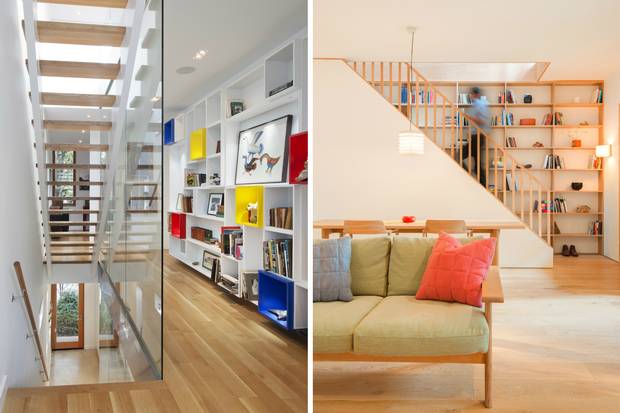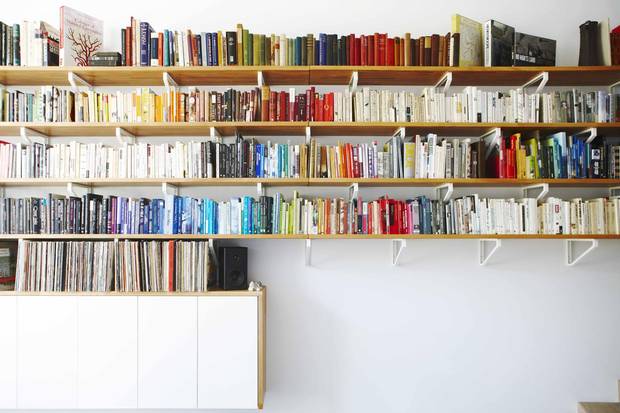A decade ago, when print sales began to dwindle, and countless bookstores closed their doors, no one could have predicted that real, hard-copy books were going to make a return – with a vengeance. Today, not only are book sales rising (industry organization BookNet reports that print copies accounted for 80 per cent of total book sales in Canada last year), but public libraries are becoming increasingly cool places to hang out.
Architect Vanessa Kassabian, a project manager behind Snøhetta's winning design for the new Calgary Central Library, sees the once forcibly quiet institutions as a place for social activity, "Libraries now are almost more social spaces than they are about learning," she says.
Snøhetta's design (aimed for completion in 2018) eschews a single type of circulation in favour of several options for getting around. "We offer a lot of different ways of navigating the building," says Kassabian over the phone from the firm's New York office. One can climb the grand wood staircase, walk the ramp along the façade, or navigate the ascending platforms filled with bookshelves. "[The library] has a lot of interstitial space that you can hang out at," says Kassabian, noting the moments where one can stumble upon a cluster of furniture or semi-enclosed pods, surrounded by bookshelves, serving as semi-private spaces. The design team opted for materials and objects with a domestic feel – warm wood and colourful furniture – to create a welcoming environment.

Snøhetta’s design for the new Calgary Central Library sees a once forcibly quiet institution as a place for social activity.
Digital rendering courtesy of Snøhetta
Calgary is not the only Canadian city that has invested in a new library with the aim of encouraging social gathering. The Halifax Central Library, which opened in December 2014, was conceptualized as a "city's living room," architect Morten Schmidt, of Schmidt Hammer Lassen, told The Globe and Mail shortly before its opening. The building's dramatic cantilevered glass-encased fifth storey features an open space for socializing, with descending stairs doubling as seating, reminiscent of a contemporary agora. The City of Ottawa has also announced plans for a new building, and Edmonton is giving its Stanley A. Milner Library an overhaul. And perhaps not as grand in scale, but big in spirit is the Story Pod, a public book-exchange space in Newmarket, Ont. The eight-by-eightfoot wooden pavilion, designed by Atelier Kastelic Buffey, is a take on the Little Free Library project gaining steam across North America. The Story Pod, which was installed last August, features integrated seating, creating a tiny living room in the heart of the town.

The Story Pod.
Shai Gill
While public libraries are taking inspiration from living rooms, home libraries are also being reinvented. With book sales steadily improving, architects and designers are looking at similar ways to showcase ever-growing private collections. Heather Reisman, Indigo's CEO and Chief Booklover, says that the interest in collecting is now extending beyond beautiful art and photography books, which remained in demand during the e-book craze.
"Beautiful books to read, love and display are showing up in all categories," explains Reisman via e-mail. "We recently created a cloth-bound limited edition of Anna Karenina with the original cover art that promptly sold out in all stores." For those who haven't Marie Kondo'd their entire book collection, a home library is something to be proudly displayed (and documented with #shelfie and #bookshelfie hashtags on Instagram).

Architect Peter Benoit’s Wood Box.
Courtesy of Peter Benoit Architect
When it came to renovating his Emeryville, Calif., loft, architect Peter Benoit created an entire concept around a bookshelf. The Wood Box, which houses the book collection compiled by him and his wife, also forms the walls of a bedroom, under-stair storage, and a dressing room above. The project, completed in 2010, was hand-built using inexpensive, straight-from-the-mill unfinished Douglas fir one-by-four boards. Another epic built-in residential project is Bookcase Staircase by Levitate, a London-based architecture firm. Built in 2005 as a space-saving solution for an avid book lover, the straight-out-of-a-fairy tale library staircase is lined with English oak shelving, and the books are brilliantly nestled underneath the stair treads. The library leads to a loft space, with a skylight guiding the way.

Architect Kyra Clarkson’s Mon display unit (left) and The Practice of Everyday Design’s multi-floor bookcase.
Steven Evans; A. Marthouret/revelateur-studio
Utilizing the staircase for book display is not only an efficient use of space, but it can also make the bookcase the focal point in a home. In 2014, for clients who wanted a generous space to display their collection of precious stones and books, Toronto-based firm The Practice of Everyday Design created an elegant shelving unit, with a ceiling-high bookcase downstairs morphing into a shorter waist-high one upstairs, thus bridging two floors in one continuous line. When looking up from the entrance of a Modernest-designed Toronto home built in 2014, one catches a glimpse of a colourful shelving display in the second-storey hallway, parallel to the stairs. The shelving designed by architect Kyra Clarkson, who co-founded Modernest, is composed of a series of custom modular display boxes, organized in playful manner, with the primary-coloured units jutting out like a Mondrian painting come to life.

Public Studio.
Naomi Finlay
And Toronto-based Architect Tamira Sawatzky came up with an economical solution to constructing a bookcase for the live/work home of Public Studio, a collaborative art and architecture practice she runs with artist Elle Flanders. The shelving runs the entire length of the living room and is entirely comprised of Ikea components: A one-inch butcher-block countertop sitting on Ekby Lerberg brackets. The pair catalogued the collection by both subject and colour, creating a beautiful gradation of hues.
Whether in a private or a public realm, paper books inspire a sense of comfort and warmth, perhaps due to a healthy dose of nostalgia. Reisman also attributes the return of print to the need to unplug from a world increasingly dominated by technology: "This resurgence of the physical book directly taps into the desire for individuals to take mindful moments, and they are now displaying their books proudly in their homes, whether on coffee tables or their bookshelves."
Editor's note: An earlier digital version of this story incorrectly stated Ms. Sawatzky's first name. It is Tamira, not Tara. This version has been corrected.
